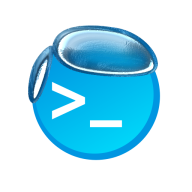• (Updated )
My verdict on Liquid Glass vs Material 3 Expressive.

Over the past 4 weeks, two new design systems emerge. First comes Material 3 Expressive, which upgrades the existing Material Design (or "Material You") and fight against some boredom that do come from the previous designs.
Secondly, Liquid Glass, the long-awaited redesign by Apple (and even Microsoft) fans "as inspired by visionOS".
If you don't have much time, I really prefer Material 3 Expressive. Here's why:
Liquid Glass is computationally expensive (and also mean sluggish).
Device performance becomes a heated discussion around Liquid Glass, the new Apple unifying design system, and I do agree to certain point. In fact, I believe Google's decision to keep using flat colors in Material Design is also derived by the concerns of computational performance.
In short, the more effort it takes to render objects, as simple as glass, your device may consume an unnecessary amount of computing powers which leads to:
- More sluggish apps and devices
- Higher battery consumption
- Lower battery lifespan for mobile devices.
Glassmorphism isn't new, and we have experimented around it before. Our current solution discreetly discards the use of opacity and backdrop blur to allow us (our website) to support low-performant devices.
No matter how Apple fanboys would react and respond "well, ain't my problem on my latest iPhone," maybe in the future, Apple would use the capability of rendering liquid glasses to measure their performance.
"This new Apple Silicon architecture is capable of rendering 10,000 liquid glass elements per second."
Liquid Glass is anticompetitive by design.
Today, if you want to create a mobile app for iOS, there are several official (UIKit, SwiftUI) and unofficial (Flutter, Kivy, React Native) ways to do that. Same thing with unofficial macOS toolkits like Electron, too.
Some of the unofficial frameworks opt to use their own custom components, not using UIKit or SwiftUI. And that could be a problem with Liquid Glass from the developers' perspective.
Implementing these effects would be a painful for developers if they want to get away from Apple's own GUI toolkits. And this may hit alternative development frameworks some hard shares in the software development market.
In the same Google I/O event where Material 3 Expressive was recently introduced, the team and community behind Flutter announced "just figured out how to round corners like how Apple intended". It took 12 years since iOS 7 (and 7 years since the first public release of Flutter) just to copy one of the authentic designs at Apple, in Flutter.
iOS 7 also comes with frosted glass, which is impossible to replicate the effect for websites, back then. backdrop-filter:blur, the CSS feature required to reproduce it, was finally rolling out in major browsers since 2022, roughly 9 years after iOS 7.
Liquid Glass will offer a whole new way for devs to stress over: replicating the refraction in CSS (which currently does not work in Firefox and even Safari), tinkering over fluid dynamics for UI components, and so on. Again, these efforts will probably take another decade for non-Apple developers to replicate by multiple stakeholders. Be it Google, HUAWEI, or the W3C.
Maybe someone else has just summoned the European Union Commission to consider this and banning Apple products in the future.
Do we need expressive design?
Great question. If we talk about a two-factor authentication app like Google Authenticator or Duo Push, do we need to incorporate fancy shapes or animations "to verify that it's you"?
Currently, that's my concerning point in Material 3 Expressive. Besides that, the original Material 3 ("Material You") is heading a right direction where themes can not just be personalized by selecting a color accent, but with a triadic (Primary-Secondary-Tertiary hues) approach to colors.
Are we solving the right problem?
They may be the most personalized design systems to date, and I still agree.
However, I see them more as a corporate virtue signalling attempt that they really care with their users, and discourage them from further tinkering with their platforms (e.g. jailbreaking and rooting) because the default is already beautiful to stay.
Despite all the fight, these two designs made me to refine my own design system once again. Currently, we often forgot that our lives have become filled with design systems fighting over each other for brand exposure and attention. Picture this:

Anyway, the current design system that powers our website will be upgraded to Reinhart International, as in an "international airport".
